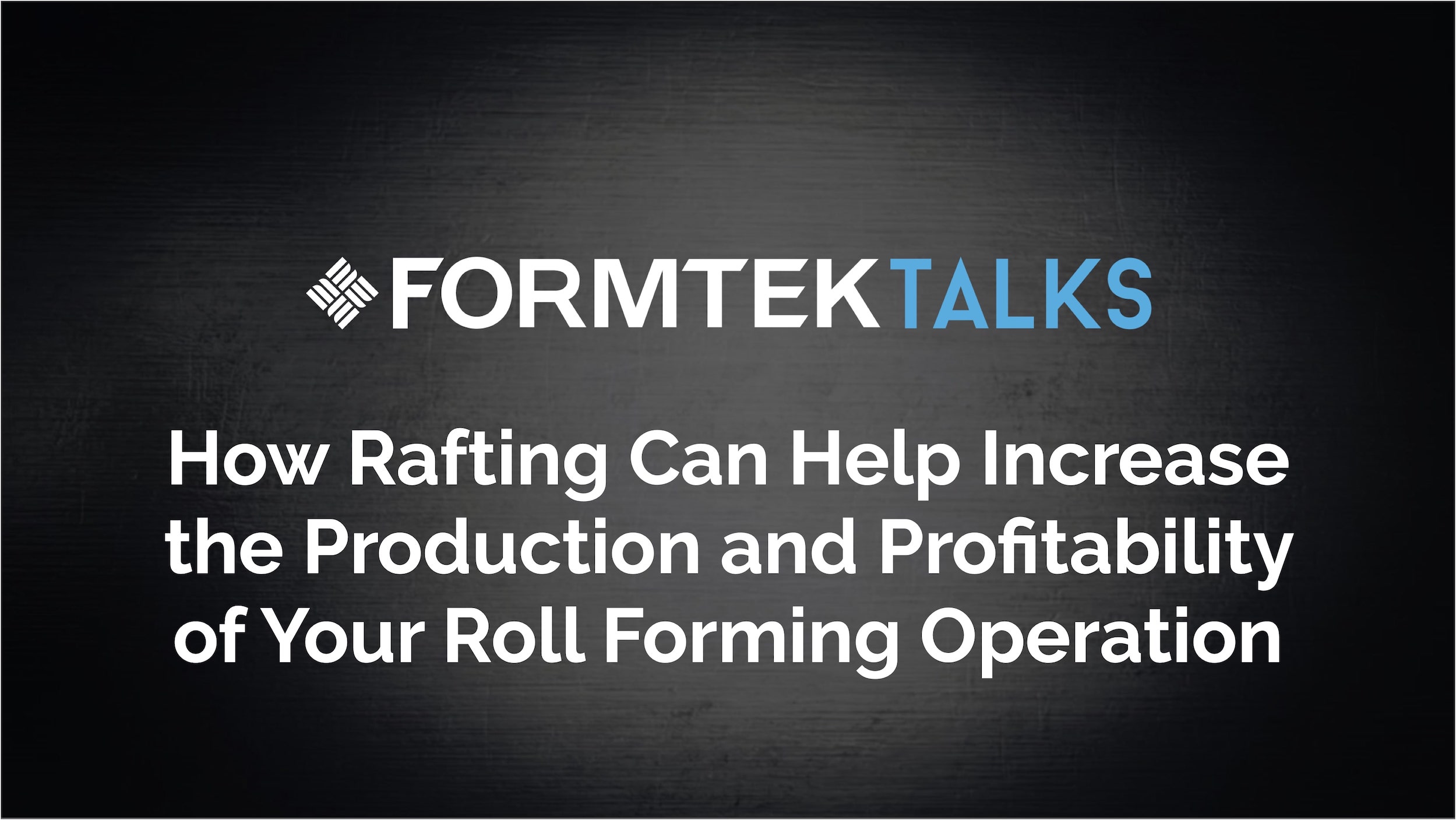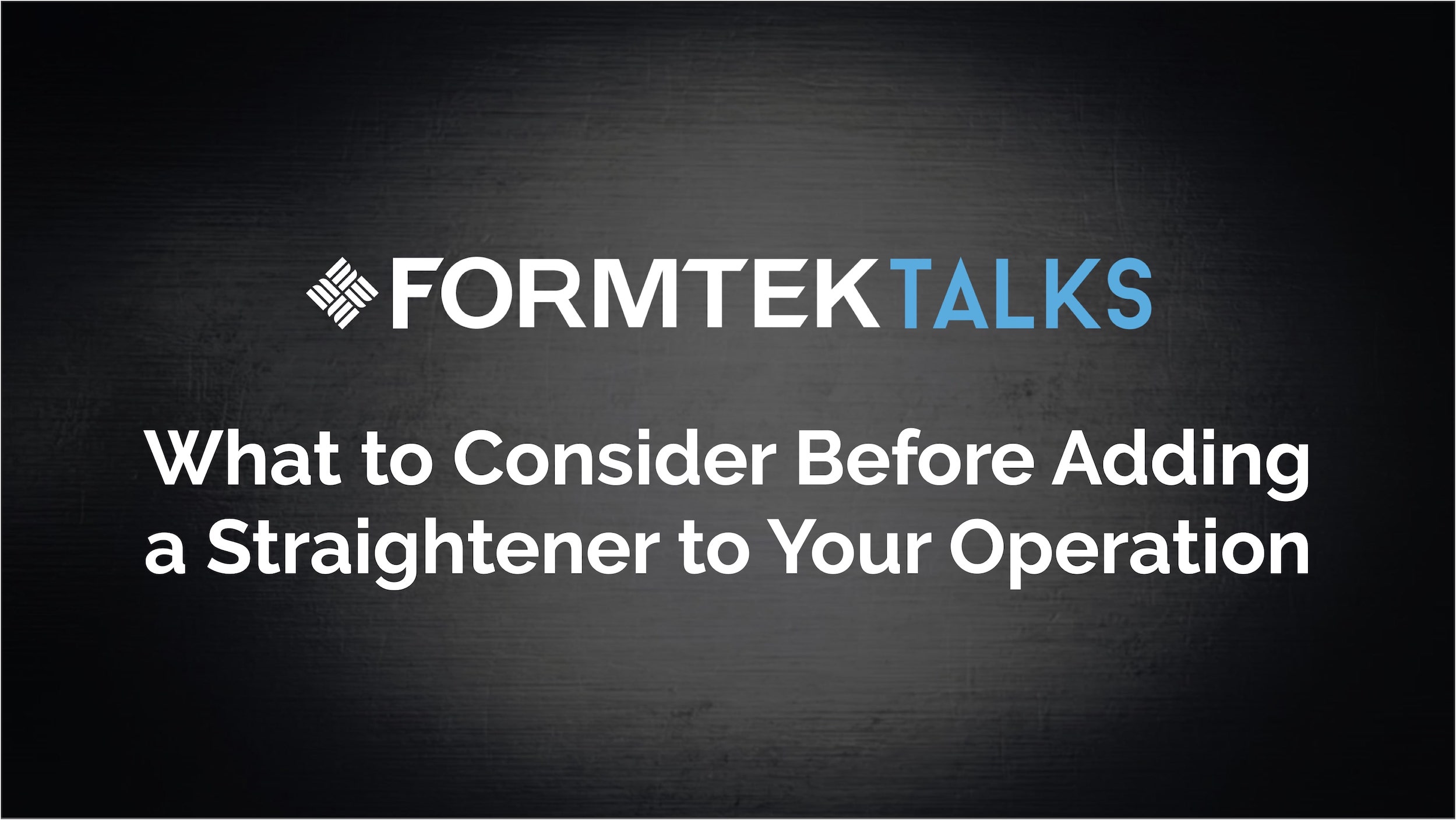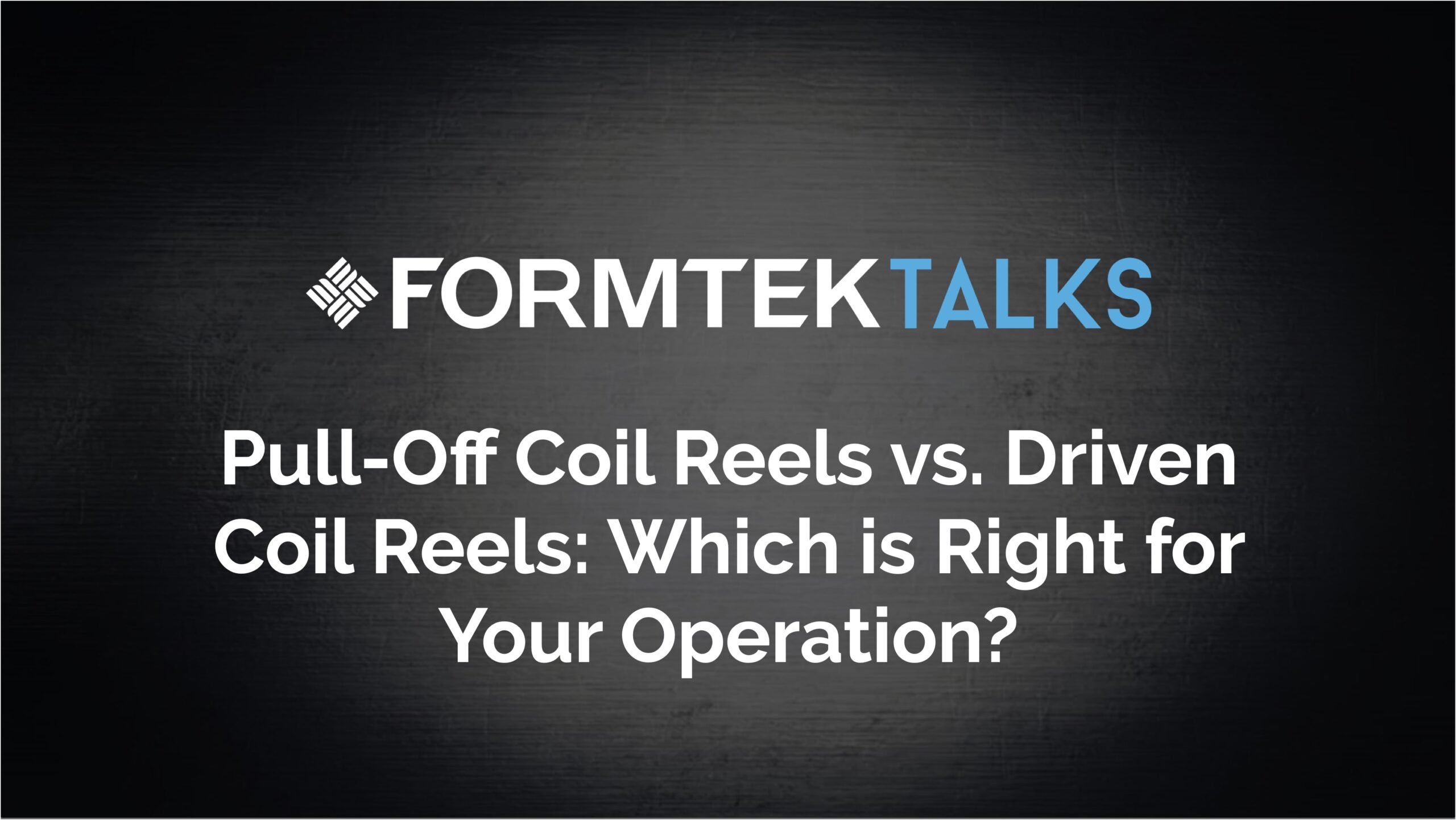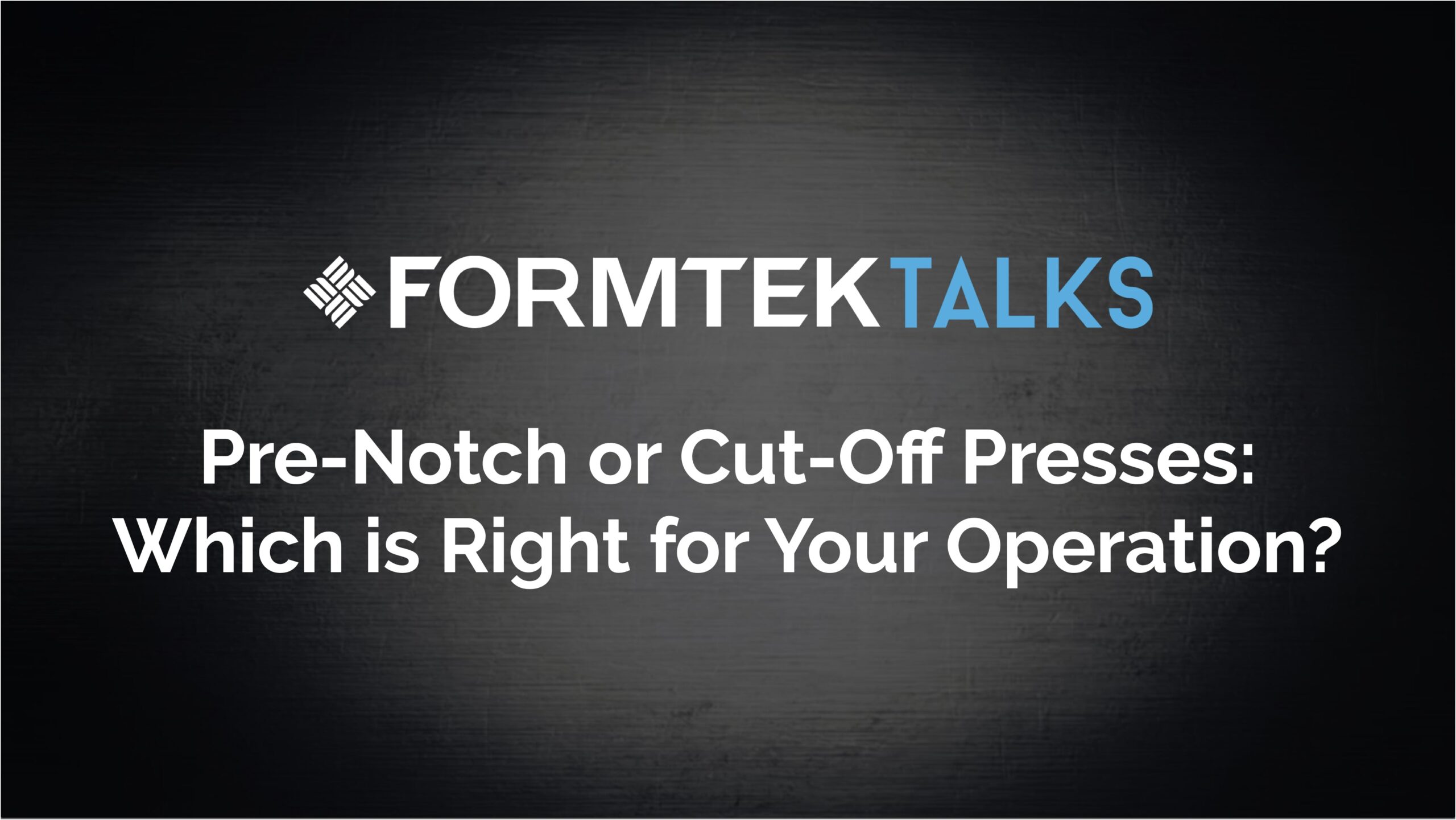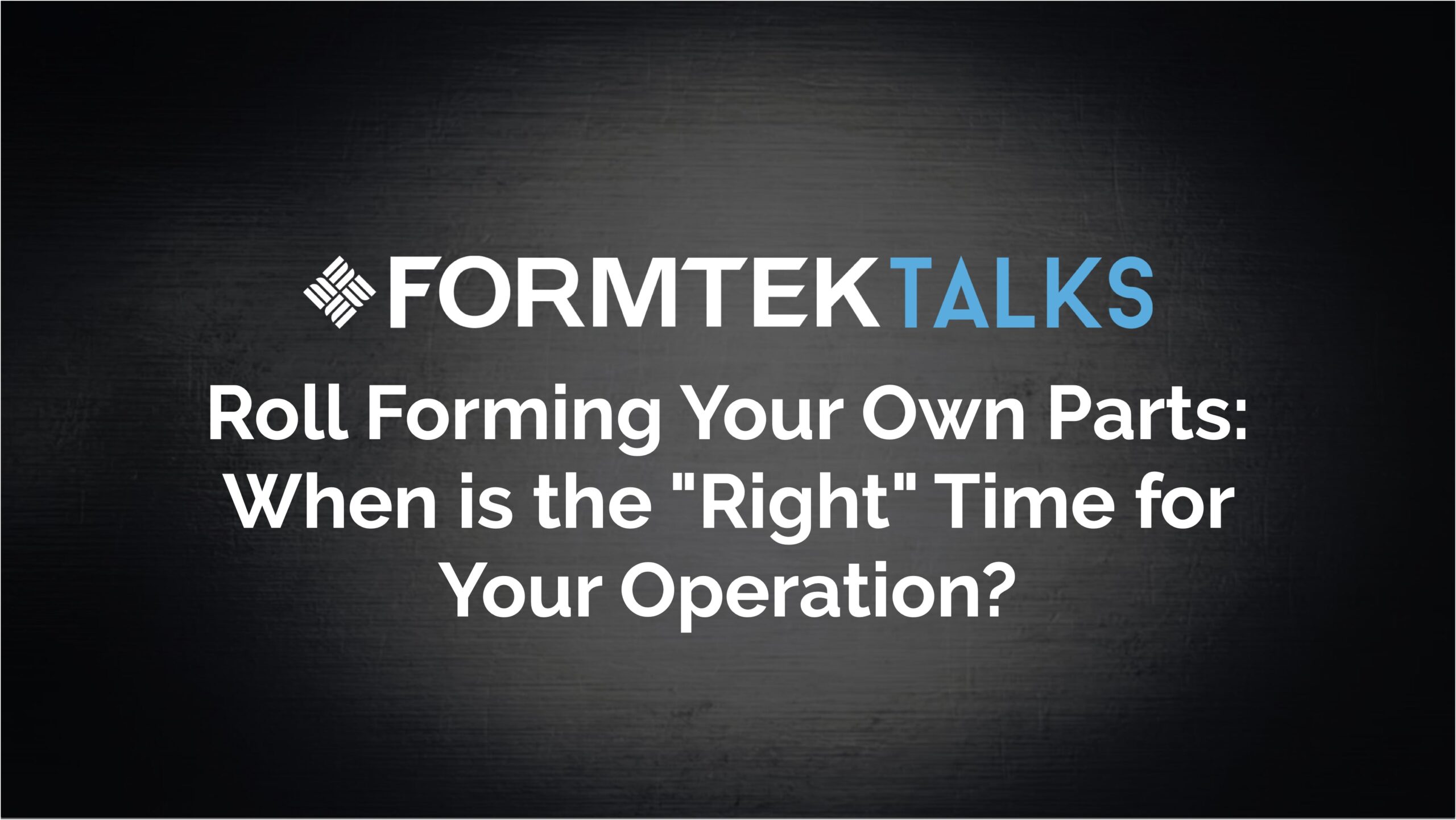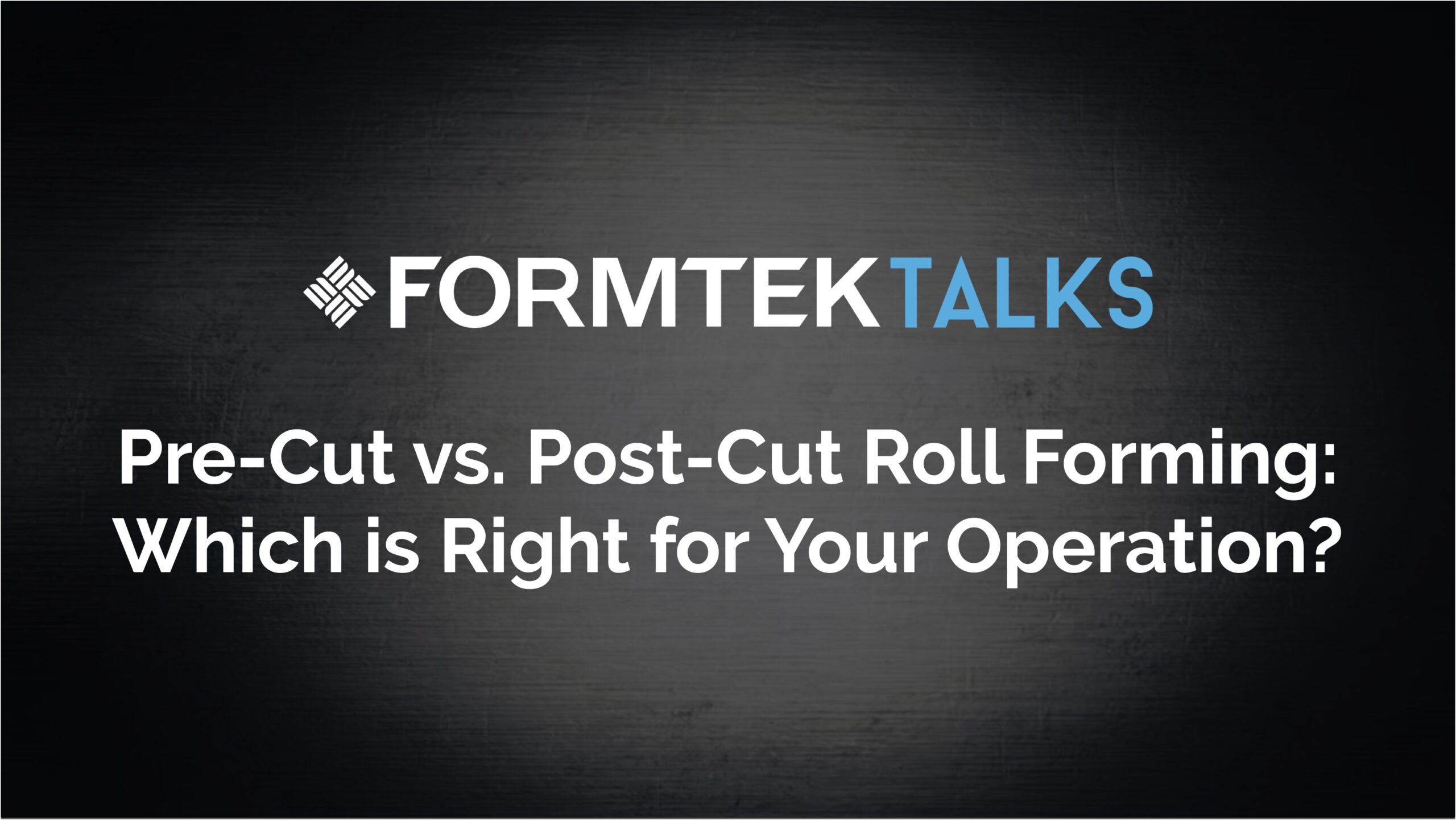Welcome to Formtek Talks — where we discuss the topics that matter most to the metal forming and fabrication industry as you look for ways to improve your operations.
In this episode, Brian Kopack is joined by Kevin Enos, and Charlie Burgess and the discussion focuses on servo feeders — specifically how they function with press strokes and cycle rates and the various things you need to consider when selecting one for your roll forming operation. As you’ll see, there are a number of things to consider in deciding IF adding servo feeder is right for your operation and then selecting the one that’s right for you. But that’s why Formtek is here to help as you make these evaluations. So when you’re ready, please don’t hesitate to reach out for a no-obligation, 1-on-1 consultation with a Formtek Technical Specialist — we’d love to get to know you and your operation, get a good understanding of what you’re looking to do, and see how we can help you achieve your objectives.
Meet the Panelists
Watch the Video
Listen to the Podcast
Read the Transcript

We Want Your Feedback
We’d love to hear what you think about Formtek Talks so we can make these better as we go along. Even feedback about what topics you’d like to see us tackle in future episodes would be great.
Meet the Panelists

Brian Kopack
Vice President of Sales | Formtek, Inc.
- 22 years in the metal forming and manufacturing industry
- Bachelor of Science Degree | Mechanical Engineering from Case Western Reserve University

Kevin Enos
Vice President of Sales - Midwest | Formtek, Inc.
- Over 25 years in the metal forming and manufacturing industry
- Bachelor of Science Degree – Business Management | Edison State College

Charlie Burgess
Sales & Application Engineer | Formtek, Inc.
- Over 30 years in the metal forming and manufacturing industry
- Bachelor of Science Degree | Mechanical Engineering from Youngstown State University
Watch the Video
Listen to the Podcast
Read the Transcript
Hello everyone. I’m Brian Kopack from Formtek and welcome to Formtek Talks. In today’s podcast, I’m joined by Kevin Enos and Charlie Burgess, and our discussion focuses on servo feeders. Specifically how they function with press strokes and cycle rates and the various things you need to consider when deciding how to select them for your roll forming process. Thanks again for joining us.
I think I’m going to start off. Servo feeders when it comes to a roll forming application, is typically used when we have to do pre notching or pre-cutting type operation. Based on that Kevin, tell us a little bit about some of the advantages or features of various servo feeders and why you want them. There’s lots of things to consider when you’re talking about a servo feeder. Let’s just start with the basics. What are the basics things you guys need to know when somebody comes to you with a servo feeder type application?
The biggest things are going to be for sizing the unit first and foremost, the material thickness, the line speed, feed progressions or feed lengths, and that’s all that’s going to go into considering and being able to size the motors and the roll diameters and things of that nature. The backing up a bit, servo feeders ultimately are the replacement for mechanical feeders, gripper feeders, things of that nature rack pinion, more chance for marring the material, the way you have to transfer it far more limitations on making changes to those feed lengths, things of that nature set up by the operator or maintenance personnel. The mechanical or cam driven, that’s a very difficult process. When you have to be precise in the feed lengths, that is very difficult to dial that in.
A gripper feed is not ideal for applications where you can have scratching or marring on the material where basically you’re grabbing the material or pinching it on the sides, or possibly the middle dragging at a fixed distance, and then letting go and rotating back to position. A servo feeder by far and away is the simplest, easiest and most accurate way to convey material from point A to point B. You can make adjustments to a feed length in process at one thousands. You can plus or minus if going back to your hole location. If you’re missing by just a bit, you can adjust that while the machine’s running plus or minus one thousands at a time in putting in job numbers, which you can’t do with any of the four mentioned ways of feeding material from point A to point B.
Roll finishes, again, are a factor for the pin rolls. If you’ve got surface critical painted pre paint material, the roll finish is going to be critical to ensuring that, that material does not get marred or scratched. Repeatability of the unit, and we tend to get into roll repeatability versus part repeatability. The distinction is on the accuracy of the unit is plus or minus two thousands. If you were describe a line on your upper and bottom pin roll, you put in a specific feed length, those based on the circumference of the rolls, then you should have those two points meet back up after a full rotation. On a gripper style or cam style, there’s no way to achieve that level of accuracy.
The reason that we say roll repeatability versus part repeatability is there are other things, if there’s other coil conditions, for example, other than coil set in the material, the chance that you are going to be able to repeat that fee length each and every time is less achievable, not because the machine is incapable, but because of inherent conditions in the material. Those would be the biggest factors. Roll lift would certainly be another factor. The various types as was discussed in a different episode, where we talked about feeders with pulse through straighteners. There’s different configurations that you can utilize. And then finally, with a servo feed, you could do a two roll or a four roll servo feed. Again, that’s going to be application driven based on a four roll feed. You have twice the amount of surface contact with half the amount of air pressure, thereby mitigating the chances you’re going to scratch or damage the surface critical material you’re trying to feed into a roll form or a press.
There’s not a whole lot. It’s more customer driven and customer preferences as to being a cabinet mounted, which would be a standalone unit or mounted to the press itself. The biggest advantages of having a standalone unit, is you’re not subject to any vibration from the press itself. That vibration could translate into miss feeds, inconsistent feed lengths, things of that nature, accessibility to the press window would be another detriment of having a press mounted unit. Most customers nowadays opt for a cabinet mounted unit. You’re not subject to the same vibration. We do tie bar to the press to ensure at least in a press application, you’re going to have some inherent movement of that press. The feeder we need to be able to follow that inherent movement of inertia in the press that allows to maintain a consistent feed length and accuracy of that feed length.
Those would be the biggest advantages of one over another. In both cases, I would recommend having adjustability of those units, so you could adjust your pass line height. A lot of folks do not have consistency in their dyes where you’re in the press itself. So you would have to modify the pass line location to accommodate for various die heights, feeding into a roll forming application certainly having that mounted on a shelf directly to the roll form. You’re not dealing with a lot of those same issues you’re dealing with a press. You’re also typically dealing with narrower widths with a roll forming machine than you can get into on a feeder, or I’m sorry, on a press.
That exactly correct. And I would add to that to Charlie’s point. The reason it doesn’t lose the accuracy is the fact that you are doing the measurement. The critical measurement is from hole to hole and not necessarily on the feed length at that point. The reason for opening those rolls and re zeroing is what’s going to ensure we’re going to feed the specific amount, but the piloting is what’s going to ensure that the hole location, again, you could have other coil conditions where the feeder is showing it moved that material exactly where it was supposed to at the orientation from hole to hole could still be off as a result of some other material problem.
The other thing to Brian’s question would be what we call batching and gagging. It’s not necessarily hole to hole, but you may have an application, whether it’s punching on a roll form or some other application where going to move the material and increments of two inches and then two inches, and then your next couple of punches or movements may be three inches. There’s going to be a pattern or a grouping of movements that have to follow. Again going two, two, two and then you have a couple of three inch movements and then you repeat that process all over again. Another advantage with the servo feed is the flexibility to provide that type of capability that is not the case with the more mechanical type of feeders.
There, it is not in that case, predominantly not a customer per reference, the reason for it. And again, as I’ll use a press as an example, the reason it’s located on the entry side in most instances is the fact that you are facilitating that material into a dye. Whatever that dye pattern is, punching a hole, making a part, once it does that process, there’s less material to work with on the other side or the exit side, then you get into things like lube. There could be vinyl application, any number of reasons. The vast majority of the applications have the feeder on the entry side of the product, because you are having other processes done on the other side of those rolls if you look at it that way, conversely, if we were located on the exit end, we would be feeding out a skeleton of material.
And what you’re going to get as a result of that is different than what’s on the inside. Plus if you have any issues in the dye itself, that could create problems on the exit side feeder versus one you wouldn’t experience on the entry side of the feeder. It is more driven by the fact that there’s something occurring after the feed rolls, where the precision required is induced at the entry side and not on the exit side. Now that being said, there are applications that do require the material to be pushed or pulled from the exit side to another, a secondary operation. There is what’s called a push pull feed where you’re bringing that material in via a feed on the entry side, but then also require a powered feed on the exit side to get that material through the dye out to. Again, you’re the skeleton to another operation rewinding or otherwise.
All the feeders today have an HMI and that’s because they can be operated independently or as part of the entire line. And there would be opportunity to set up a job number, for example, at the feeder, which you cannot do at the straightener end. Conversely, there again, the micro adjustment of plus or minus a thousands, for example, typically that’s done at the feed end because you’re close to the die or close to the roll former. You can see the impact to that and the adjustments that are made. Unfortunately in today’s market with the result of fewer employees, the automation factor becomes of greater need.
The ability at the front end of a line at the straightener or the leveler, for example, being able to set it up by job number where everything is done at the feed control and transfer it down to the servo. There’s various levels of integration and automation that can be done, but almost all of them now are done at the feeder via a part number could be a barcode scanner, again, a various amount of methods to accomplish that. But the benefit of being able to do it right there at the feeder is certainly advantageous as you can get into some pretty good distances from one piece of equipment to another, on a larger line.
In simple terms, the accel and the decel rate is what we’re referring to. The answer, your first question, we do not have a lot of customers historically, where that’s been an issue or an area requiring adjustment. Anything for every action, there’s an equal, but opposite reaction, changing the accel and decel can have a detrimental effect as well as a beneficial one. It’s something that very few customers mess with because they don’t want to have a negative impact on other aspects of how the machine operates. That being said, the advent of servo presses has really brought that to the forefront where historically had kind of been on the back burner for most folks, for the reasons I mentioned. With a servo press, that window is far more flexible and you’re no longer dealing with simply 360 degrees.
Without getting too far ahead of myself, the accel and decel, will impact how quickly you can move the material and how quickly you can slow the movement of that material, based on the degrees available for not only feeding the material into that point, but also getting the tooling engaged, getting the tooling removed before you have that next movement. With a servo press what’s increased greatly there, is the accel and decel effect on it because you’re no longer dealing with a 360 degree window. You could be dealing strictly with 180 degree window and the pendulum mode, they’re only running basically at the bottom of that circle. You’re only running basically half of that rotation instead of a full rotation. The time afforded you to make a movement with the feeder then becomes directly tied to that acceleration and deceleration rate. It is something that is growing in adjustability for customers as they gravitate more towards servo presses than the mechanical presses of yesteryear.




